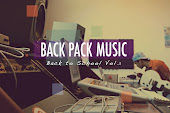A few
days ago, I took a serious look at one of the bins that carries my school’s
free newspaper, ”The Sentinel” which sat right next to a stack of the New York
Times. The American Democracy Project in partnership with the NYT provides 350
copies of these “free” copies of the Times to KSU students every day, 365 days
a year. The Sentinel however is delivered once a week and doesn’t release any
news during school breaks. This juxtaposition of the hyper-local Sentinel versus
the salient and dominate NYT made me think about the effects that the New York
Times had on college readers habits, how they got there in the first place, who
reads them, and why do we need them?
The ADP
is a nationwide program organized by the American Association of State Colleges
and Universities (AASCU). The ADP sponsored NYT journalist and foreign editor
Greg Winters on the KSU campus in February and cosponsored an event to bring
Nicholas Kristof to campus for a lecture. This program has done a great deal in
the way of civic engagement and political awareness for students and the idea
that newspapers are critical for democracy is inherent in this program.
This
summer, the ADP will pilot an online program that will give all-access to the NYT online content for students at Kennesaw
State University (KSU) and other ADP involved universities around the country.
This program will allow 350 “seats” for students to fill at any one time to read
the NYT, the same amount of issues that students receive on campus each week.
Still uncertain
that KSU students were even interested in a college readership program, I stood
in front of the dining hall and surveyed my peers on their reading habits. What
I found from the small 20 student sample was that 50% did not read the KSU
Sentinel, which didn’t surprise me very much; college students aren’t known as
big news consumers. Only 35% of students read the NYT, but what I found
interesting was that almost all of the students that did not read the NYT weren’t
even aware that there was a College Readership Program on campus. Therefore had
students been aware of the Readership Program it might be more of an effective
tool to get students to read the Times and other print media.
When I
spoke to Dr. Rascati, Co-coordinator for the American Democracy Project, he
said, “the number of copies [of the Times] that are left over are almost always
zero,” which he later conceded that copies of the paper could be picked up by
faculty and staff which is then hard to estimate the amount of copies that
actually land in the hands of students. So, I can’t necessarily peg students as
believers or non-believers in print media.
Ed
Bonza, Media Advisor at Kennesaw State University said that the KSU Sentinel
will never die if it produces quality news that Kennesaw students want to read.
On the other hand, this has been a very real issue that has plagued the
traditional print newspapers. In my survey I found that half would rather get
their news from a real newspaper and the other half would rather get their news
online. So, the print edition is still popular, but there is just as much
interest in the online product, which may be why the Times and the ADP is
moving toward an online based readership.
After
everything is said and done, I came to a conclusion that college readers just
aren’t that interested in newspapers which is why the ADP and the NYT have made
it so readily available. And the ADP and the NYT have established what is
ultimately - this might sound a little cynical - a business model for selling
the Times. This business model sells newspapers on the idea that news is
essential to democracy, but I do have some doubts about the program. Especially
since it seems like they are free, but in actuality the University pays for the
subscriptions through academic funds which takes money away from the student
run Sentinel. I wouldn’t want to underplay the ADP’s role on campus, but it
seems like the ADP and the NYT have created what will become a model for all
news institutions to ensure that college readers read their paper.











No comments:
Post a Comment